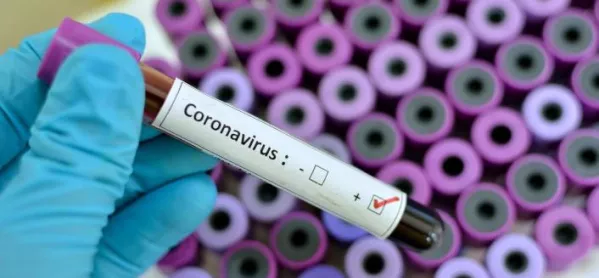The fact that school attendance was lower at the end of the national lockdown than it was at the start is “deeply depressing”, a teaching union leader has said.
New figures from the Department for Education show that one in five secondary school pupils and one in 10 primary pupils were off at the end of last week.
These figures are worse than the comparable data on 5 November as the lockdown began, but show that attendance has been improving over the past two weeks.
Covid: School forced to close its doors for Christmas
Revealed: Covid cases in schools area by area
Attendance: 300,000 pupils self isolate in a single day
However, Dr Mary Bousted, the joint general secretary of the NEU teaching union, said she expected attendance to begin dropping again now that the national lockdown restrictions have been eased.
She said: “The latest figures from the last week of national lockdown are deeply depressing.
“One in five secondary pupils and one in 10 primary pupils were absent last week, which means attendance is lower than at the start of the lockdown. As coronavirus restrictions are eased, we expect attendance to start falling again.
“The government must implement measures that reduce infection among school pupils.”
The latest data from the DfE shows that attendance in state-funded primary schools was approximately 90 per cent last week, up from 88 per cent a week earlier but down from 92 per cent at the start of the second national lockdown.
In secondary schools, the figure was approximately 81 per cent, up from 78 per cent on 26 November but down from 87 per cent at the start of the lockdown.
The data also shows almost two-thirds of secondary schools have pupils self-isolating after potential contact with a confirmed Covid case in their school last week.
However, the proportion of both primary and secondary schools in this position has dropped.
The figures for Thursday 3 December show that 63 per cent of state-funded secondaries had one or more pupils self-isolating after potential contact with a Covid case at school, down from 68 per cent the week before.
And 22 per cent of state-funded primary schools were in this position last week compared with 26 per cent last week.
The proportion of schools that had 30 or more pupils self-isolating owing to potential contact with a case of coronavirus inside the school had risen from 8-9 per cent on 5 November up to 25-27 per cent on 19 November.
On Thursday 26 November, this decreased slightly to 23-25 per cent. And the latest figures show this has fallen again on Thursday 3 December to 19-21 per cent.
The data also shows that 99.5 per cent of state-funded schools were open last week, up from 99.2 per cent on 26 November.
In total, the DfE estimates that 650,000 pupils (between 7 and 8 per cent) in state-funded schools did not attend school for Covid-19 related reasons last Thursday.
Education secretary Gavin Williamson said: “From the point children returned to classrooms in September, it has been and remains a national priority to keep schools and colleges open full-time, and the chief medical officer has highlighted the damage caused by not being in education to children’s learning, development and mental health.
“So it is encouraging to see that, following national restrictions, attendance has increased again this week, while overall prevalence is falling among both children and adults.
“Schools, colleges and early years settings across the country have gone above and beyond to remain open, implementing safety measures and scaling up remote education provision for those children who are self-isolating, with approximately 99 per cent of schools open each week since the start of term.”
